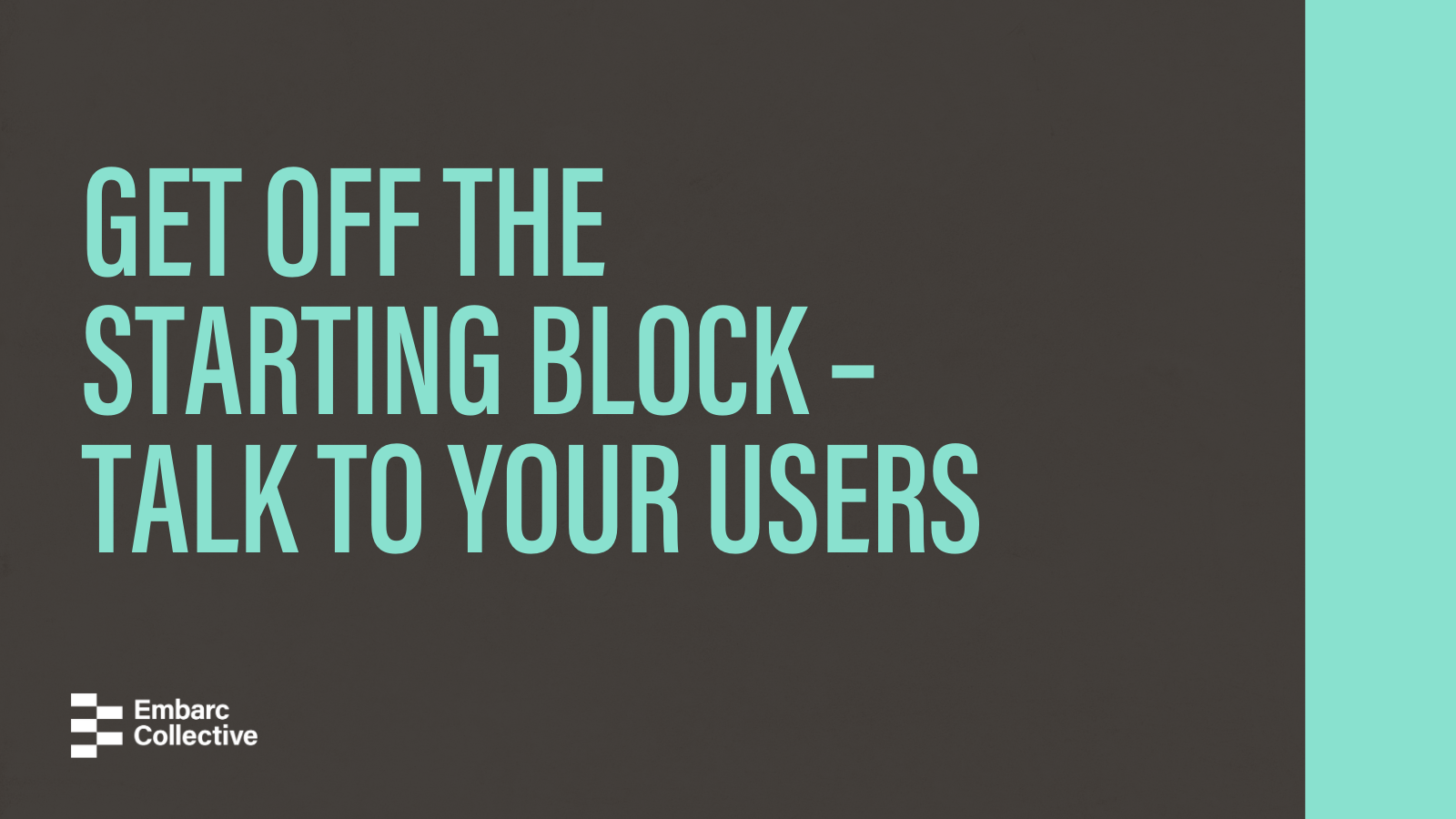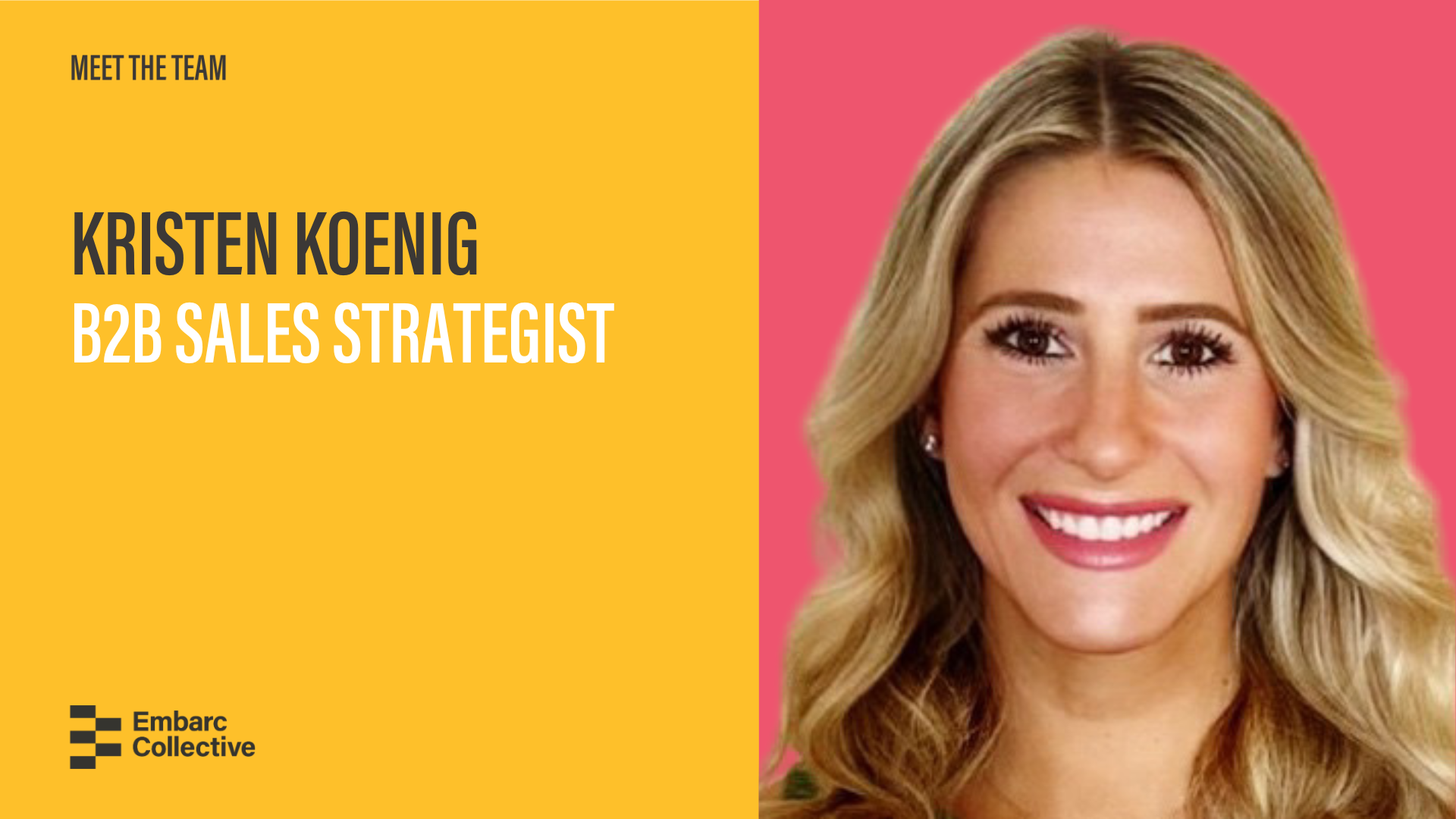Get the Weekly Collective
Learn about upcoming events and the latest startup news—delivered to your inbox weekly.
About The Author
Lakshmi Shenoy

I have the privilege each day of meeting early-stage technology startups applying to Embarc Collective. I love when I get to meet a startup leader who is manically focused on their prospective or existing users, spending time each day learning about the goals and pain points they experience.
It feels obvious to say “focus on your user,” but you’d be surprised how easily a busy startup leader can let other priorities limit one’s time learning from the company’s prospective or existing users. Years ago, I met a Chicago-based founder who said that she only cared about the problem she was solving and knew the solution she was building would evolve over time. This is a mindset I encourage all entrepreneurs to take. If you’re not solving for a person with a critical problem, you may be wasting your time. Build something that matters by talking to the people you’re trying to help each day.
For startup leaders, I offer a quick pulse check (be honest about your answers, you don’t need to share the results with anyone):
- If you’re working to launch your product, are having discovery conversations with your target users each day? If those discovery conversations are happening, are you an engaged and present participant listening to the needs of your prospective customer?
- If your product is in market, are you talking to at least one existing user each day to learn about their business and how they are using your product? Are you a part of any of the customer support calls that come to your company, even if you have other team members that specifically focus on customer support, customer success, or product?
If you answered “no” to either question, this is a great opportunity to reset and focus on your prospective or existing users.
Why Are You Avoiding These Conversations?
Often avoiding user conversations stems from a fear of failure. There are few things that are more vulnerable than launching a company. Getting feedback about where to refine your hypothesis, incorporate improvements, or that what you built isn’t addressing a core need, can feel like a personal attack. And that’s an understandable response—you’ve put everything you have into this company to build something that matters to your target users. A rejection of the product can feel like a rejection of you.
How Can You Reframe This Fear?
If you don’t talk to users, it can be challenging to get off the starting block of growing your business. No company has been successful by not talking to users. A product can only evolve if you put your plans in front of your target user. When you set out to build a company, you are on a quest to solve a critical problem for your prospective customer (and if you’re not, then check why you’re building in the first place). Attach yourself to the needs of the target user rather than the initial idea of what you planned to build. Your idea can only evolve into a successful business when you’re guided by the insights of the people you want to help. Without that input, you’re stuck in place. The feedback – good or bad – is required to get you off the starting block and to continue to build your business.
How to Get Started?
If you’re working to launch your product:
- Make it part of your deliverables to listen and learn from your target users – set a goal for the number of conversations you’ll have per week
- Draft a discussion guide to ensure that you are consistent in your approach to learning about your target users’ needs, often known as a discovery call. This guide will also help you avoid the temptation to talk about your hypothesis and sell your vision – during this phase, the goal is to do everything you can to understand who your company serves. Grab a copy of The Mom Test if you want a framework to asking questions.
If your product is in market:
- Build having user conversations into your job description, no matter your function or level within your organization. In a high-growth startup, it’s everyone’s job to know the user. Learn why users need your product, how they are using it, and what they wish it would do better.
- Leverage your existing users as a focus group for future product enhancements. Your existing users likely won’t feel the need to sugar coat their input and will be direct with their asks of your product. Seek out that directness, it will save you so much time, resources, and money.
- While there is certainly value in quantitative insights often found through digital analytics and survey data, you will gain unique and actionable insights when you can have an actual back-and-forth conversation with a user. So, don’t be afraid to jump on a plane to meet in-person or pick up the phone/set up a Zoom to ask for input.
I’ve seen the most critical feedback turn into big a-ha moments for business and the toughest audiences for a startup turn into the biggest champions. User input is not a phase of a company, it’s an ongoing process. The strongest startup leaders have ingrained their maniacal focus on listening to the customer into how they operate.
Additional Resources to Push You Off the Starting Block
How Fear Helps (and Hurts) Entrepreneurs
At Embarc Collective, one of our organizational values is Inspire Iteration. This is because we believe feedback (especially from existing and prospective customers) is a positive thing that makes what you’re working on matter more. If you’re a Florida-based startup interested in joining a community that reveres feedback, consider joining Embarc Collective’s membership.
Related Articles

2024 Southeast Capital Landscape Report
Southeast Capital Landscape Report 2024 The Most Comprehensive Investor Database in the Southeast Bu...

Embarc Collective Welcomes Kristen Koenig to the Coaching Team
For startup builders, navigating strategic partnerships and optimizing go-to-market strategies can s...

From Surviving to Thriving: Cultivating the ‘Outlast’ Mindset in Entrepreneurship
Startup building is an endurance sport with highs, lows, and everything in between. Our community of...
Meet Our Members
Meet the Embarc Collective member community of driven entrepreneurs who are building bold, scalable, thriving companies in Florida.
